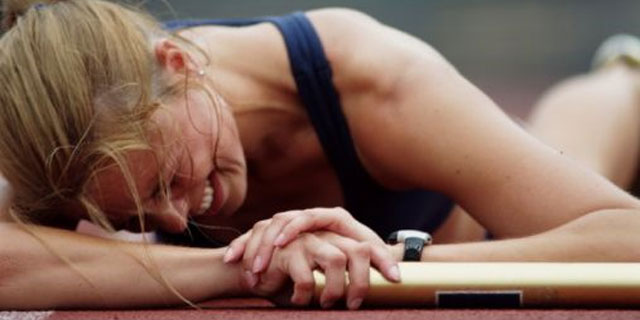There are certain standard exercises that are classics. The push-up, the crunch, the chin-up. Each one has been performed and perfected for years, and is abandoned for the latest fad and then returned to when wisdom prevails. Each requires no piece of fancy equipment, and relies instead on gravity and your body weight. Today let’s take a closer look at the chin-up, and ask a few basic questions. Why do them? What are the benefits? What do you do if you can’t even do one? Is there a way to perfect your form, and what common mistakes should you be looking out for?
A chin-up is where you simply pull your weight off the ground by grabbing onto an elevated bar. If you grip the bar with your palms facing away then you are doing a ‘pull-up’, which focuses less on the arms and more on the shoulders and back. If your palms are facing toward you, then you are indeed doing a ‘chin-up’, and will immediately notice the strain placed on your biceps as they come into action.
They’re simple to do, and the benefits area as varied as they are intense. First and foremost you build muscle. Chin-ups and Pull-ups force you to lift your own bodyweight, and this places stress on your body, from the large muscles of your back to your shoulders to your arms. They also increase your grappling strength which will benefit you in any sport that includes gripping, grappling, and pulling such as rock climbing, rowing, or the like. You’ll also find that the benefits carry over to such exercises as the overhead press and bench press, as they same, improved muscles are able to perform better in those exercise routines. Finally, chin-ups and pull-ups will greatly increase your shoulder health, in that these ‘pull’ exercises will balance out any ‘press’ exercises and thus keep the muscles equilibrated.
But they’re hard. Most people have trouble doing even a couple, and some can’t even do the first. Should you become discouraged, throw your gym towel into a corner and stomp off to chow down on some sweet chocolate cookies, convinced that there is no hope for you? No! Instead, learn to assist yourself till you can manage a pull-up alone. Some common techniques include placing a chair beneath the bar onto which you rest your tip toes and push off as little as you can. Or you can have a buddy your trust implicitly help you raise up. Conversely, you can wrap a resistance band from the bar to your knees, and allow that to raise you, or use momentum to swing yourself up.
So how exactly do you do a perfect pull-up or chin-up? Easy. Start in a dead hang with straight arms. Squeeze the bar tight, with your fingers curled around the bar, not in the palm of your hands. Breath at the bottom, taking a big breath before pulling yourself up. Don’t let your shoulders go forward; rather, rise with your chest arched as if you were going to press your sternum into the bar. Look up! That will help you keep the right posture. Drive your elbows to the floor, and bend your legs and cross your feet. Squeeze those glutes on the way up.
Despite keeping all those factors in mind, it’s still easy to mess up. Here are some of the common mistakes people make when seeking physical perfection. You might, for example, fail to straighten your arms when you hang in a dead lift. Or you might push your shoulders forward instead of your chest. Many, many people will rock and buck their hips up, using their core muscles to build momentum in order to cut their shoulders a break. Don’t do this! If you’re flailing like a salmon trying to get upstream, you’re doing it wrong. And finally, make sure your chin clears the bar. If it doesn’t, it’s a partial pull-up.
There you go. A classic exercise that delivers classic results. Do your chin ups, try to be able to do at least 15, and then start using weights to raise the resistance level. Good luck!
Philip Tucker is a Fitness Product Review specialist for Miami based Extreme Fitness Results LLC. He enjoys doing pull-ups with the P90X Chin Up Bar when doing the PX90 Workout with Tony Horton.

